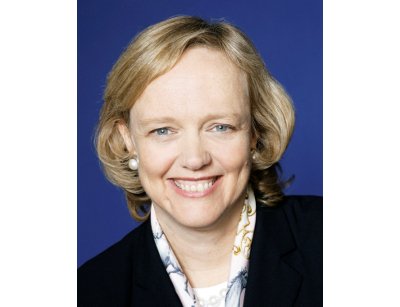As expected, HP president and CEO Meg Whitman announced that the company will be either laying off or sending into early retirement about 27,000 of its workers in the second-quarter earnings call.
Whitman, who took the reins over from HP’s previous CEO to turn the giant struggling with falling profitability around, said the measures were “absolutely critical for the long-term health of the company.”
HP has already streamlined its operations, including a massive data center consolidation and reducing the number of applications it was using. Now, “we’re going after the big cost buckets and fundamental business process reengineering in our core businesses,” Whitman said.
The company expects the latest restructuring program to generate cost savings of US$3bn-3.5bn a year. Majority of this saving will be reinvested back into the company to drive its three strategic pillars: cloud, security and information management.
“Overtime some of the savings will drop to the bottom line by the majority will be reinvested … to prioritize organic opportunities,” Whitman said.
The second quarter’s end marked six months Whitman had been at HP since replacing Leo Apotheker, who led the company for less than one year after the ouster of his predecessor Mark Hurd (now president at Oracle) amid a sex scandal.
“Overall I feel cautiously optimistic coming out of Q2,” Whitman said. “While I wouldn’t say we’ve turned the corner, we are making progress.”
HP reported net revenue of $30.7bn for the quarter – down 3% year over year. Its second-quarter earnings per share were $0.98 – beating the higher end of the prior outlook that capped expected EPS for the quarter at $0.91.
Overall revenue of HP’s enterprise servers, storage and networking (ESSN) businesses declined 6% year over year. Within this bucket, however networking revenue was up 2% and storage revenue was up 1% year over year.
Business critical systems revenue, also part of ESSN, dropped 23% year over year, and industry standard servers revenue was down 6%.
All units were scrutinized when plans to make the cuts were being made, Whitman said. Looking at each unit, the executives thought about what that unit needed to focus on and how many people it needed to deliver its main goals.
HP plans to invest the savings it generates from its newest restructuring plan across all of its businesses. Core printing and PC businesses will get some extra R&D cash, as well software, ESSN and services.
The services business is a big focus for HP. It includes security, information analytics and cloud services.
Earlier this month, HP launched its public-cloud service portfolio in a beta release. The portfolio consists of three cloud-based infrastructure services: compute, storage and content-delivery network (CDN).
HP built its public cloud on the open-source cloud architecture OpenStack, developed jointly by Rackspace and the US National Aeronautics and Space Administration (NASA).

